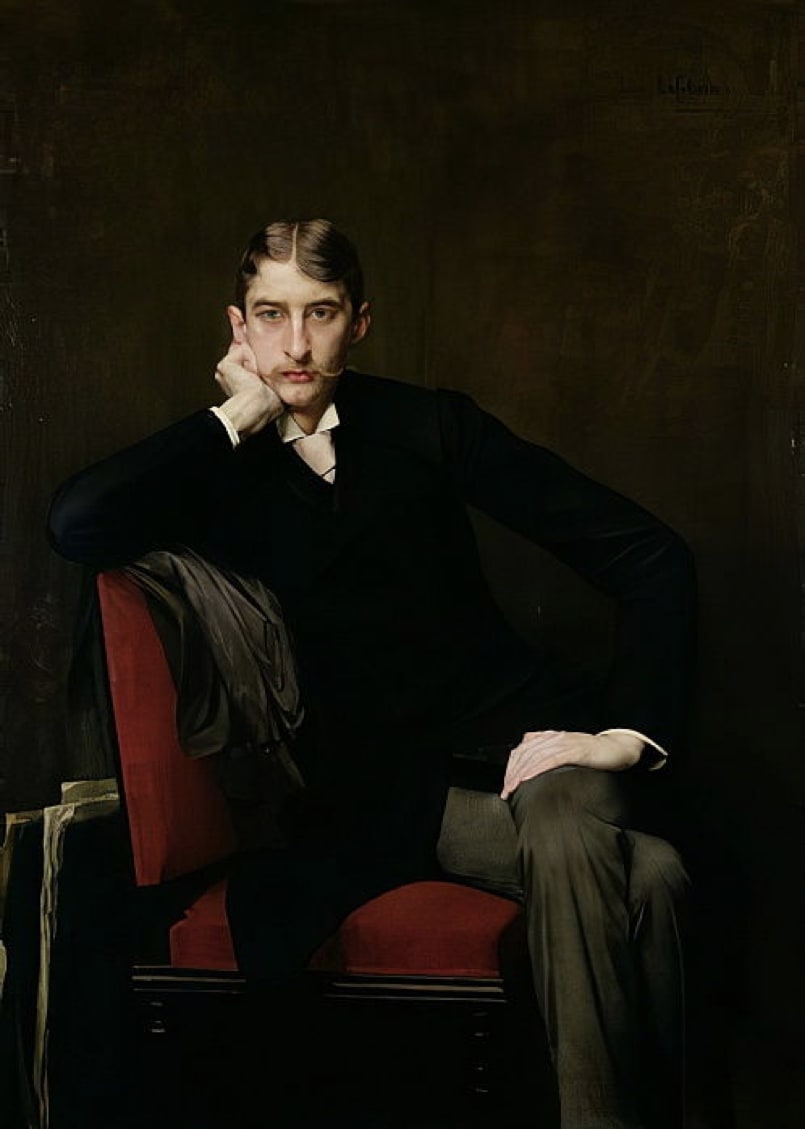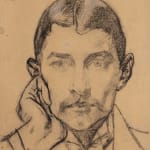Jules-Joseph Lefebvre (1836 - 1911)
Further images
Portrait of Monsieur Fitzgerald
Titled and monogrammed upper left: Aug. Fitz-Gerald / JL.
Black and white chalk on tracing paper, in 19th-century walnut frame
Portrait of Monsieur Fitzgerald
Titled and monogrammed upper left: Aug. Fitz-Gerald / JL.
Black and white chalk on tracing paper, in 19th-century walnut frame
34.4 x 25.7 cm. (13 ½ x 10 ¼ in.)
Provenance:
By descent in the family of the artist, until 2020.
With his hand resting under his chin and his insouciant air, Monsieur Fitzgerald epitomises the fin-de-siècle dandy, straight out of the pages of Marcel Proust. So much so that a close-up of his face from his 1889 portrait in the Musée du Cambrai (fig. 1), for which Jules Lefebvre’s drawing is a preparatory study, was used by Penguin Classics for their cover of Bel-Ami (fig. 2), one of the Belle Époque’s quintessential novels. Guy de Maupassant’s masterpiece chronicles the scandalous tale of an attractive and opportunistic young journalist, who learns to become an arch-seducer and blackmailer in his corrupt rise through society.

Fig. 1, Jules Lefebvre, Portrait of M. Fitzgerald, oil on canvas,
143 x 104 cm, Musée d’Orsay, on depot with the Musée de Cambrai
Unfortunately, little is known of M. Fitzgerald’s biography, so we cannot say if his personality, or only his image, is a good match for Maupassant’s amoral protagonist. Whatever the case, M. Fitzgerald, with his parted hair, thin moustache and loose neck-tie, is completely au fait with the fin-de-siècle fashions of the upper-middle classes. His direct and seductive image transports us back to the bars of Montparnasse and the café culture of Paris of the 1890s.

Fig. 2, Cover of Penguin Classic’s Bel Ami
The finished portrait is no doubt one of Lefebvre’s most successful and most evocative, and this preparatory study is a useful aid in understanding how the artist went about constructing the painting, first building up the likeness on paper with forceful lines and powerful contours, before tracing it on to the canvas. This seems to have been a standard working method for Lefebvre, with several preparatory studies on tracing paper for other works being known.
Lefebvre entered the Ecole de Beaux-Arts in 1852, studying under Léon Cogniet, before winning the Prix de Rome in 1861 and later teaching at the Académie Julian, all of which were typical milestones for the leading Academic painters of this period. Though Lefebvre’s oeuvre is quite diverse, he gained greatest fame for his depictions of the female form, as well as for his portraits, exhibiting 72 of these at the salon between 1855 and 1898.





